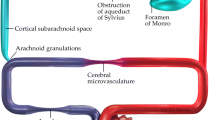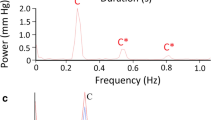Abstract
Identical twins who both presented with progressively enlarging heads in their first year of life are reported. Neuroimaging demonstrated morphological similarities in the cerebral cortex. The CSF space, including ventricular system, and subarachnoid space were dilated, suggesting external hydrocephalus. Cerebral blood flow velocity in the anterior cerebral artery monitored by Doppler sonogram indicated the two had similar flow patterns and velocities. Simultaneous recording of ICP waves and intracranial biomechanical properties, that is, pressure buffering capacity (pressure volume index: PVI) and CSF outflow resistance (Ro) measured by the bolus saline injection technique, objectively indicated that all these biomechanical factors were also quite similar in the twins. These results indicate that identical twins with external hydrocephalus have very similar intracranial environments, both anatomically and bio-mechanically.
Similar content being viewed by others
Author information
Authors and Affiliations
Additional information
Received: 1 June 1996 Revised: 2 December 1996
Rights and permissions
About this article
Cite this article
Wachi, A., Sato, K. Anatomical and biomechanical similarity in intracranial environment in identical twins with external hydrocephalus. Child’s Nerv Syst 13, 633–635 (1997). https://doi.org/10.1007/s003810050158
Published:
Issue Date:
DOI: https://doi.org/10.1007/s003810050158




